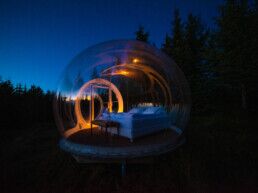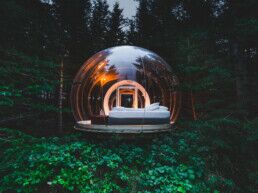- Home
- Iceland Nature
- Þingvellir National Park – Exploring the Rift Between Two Continents
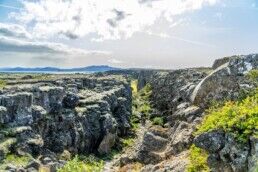
Hey, have you heard about Þingvellir National Park in Iceland? Let me tell you, it’s not just another tourist spot. It’s the only place in Iceland that’s got the UNESCO World Heritage stamp. Ever wondered why? Well, it’s not just about stunning views. There’s a whole story behind it.
So, imagine you’re on this epic road trip in Iceland, right? You’re probably gonna hit the Golden Circle, which is like the must-do tourist loop. You’ve seen those postcard-perfect shots of Gullfoss waterfall and the crazy geysers at the Geysir Area, but Þingvellir? That’s a whole different vibe.
Why’s everyone talking about Þingvellir? It’s like stepping into a live-action documentary. You’ve got these insane geological formations happening right in front of you – it’s where the Earth’s literally splitting apart! Plus, it’s not just a feast for the eyes. This place is where Iceland’s history kicked off. It’s like the birthplace of the nation!
But it’s not all history and rocks. There’s a bunch of cool stuff to do there, no matter what floats your boat. Whether you’re into nature, history, or just looking for some Insta-worthy spots, Þingvellir’s got you covered.
Keep reading, and I’ll dive into the juicy details about Þingvellir’s past, its crazy geology, and all the cool stuff you can do there today. Trust me, it’s worth the hype.
Historical Background
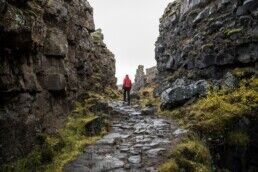
So, back in 874, this Norse guy Ingólfur Arnarson lands in Iceland, kicking off what they call ‘The Settlement Period.’ All these clans from Norway, fleeing from King Harald Fairhair’s rule, start setting up shop around Iceland. But here’s the thing: they all had different leaders and customs, leading to a lot of clashes over resources and beliefs.
Things get a bit chaotic, so they start forming local assemblies. But the real power’s in Reykjavík, and the rest of the settlers aren’t having it. They push for a general assembly to sort things out and live together without all the drama. That’s the birth of Iceland’s unique way of making decisions together.
So, there’s this guy, Grímur Geitskör, right? He’s got this big job: pull together reps from each clan and find a spot for them to meet. Now, Norse history being what it is, things get a bit wild. Geitskör’s on the hunt for a location when, bam, this guy who owns the perfect spot gets busted for murder. His land goes public, and just like that, Þingvellir is born.
Þingvellir’s in a sweet spot. Sure, it’s closer to the rich folks in the south-west, but even the guys from way out east can make it in 17 days tops. So, in 930 AD, over thirty chiefs rock up to Þingvellir and start laying down the law, literally setting up what’s like an early version of a parliament.
Looking back, it’s pretty wild. These early Icelanders were way ahead of their time, cooking up a sort of representative parliament nearly 800 years before similar ideas popped up in the USA and France. Talk about being ahead of the curve!
So, these chiefs hit it off so well at their first meeting that they decide to make it an annual thing. They call it the Alþingi. It’s not just about politics, though. It’s where folks settle their beefs, catch up on family news, and even where they dish out justice. There’s this guy called the Law Speaker who’s kind of like the face of the Alþingi, but he’s just there for show. The real decisions? They’re made by everyone together.
Þingvellir, or ‘the fields of parliament,’ is where all the big moments in Iceland’s history go down. Like in 1000 AD, when they switched from their old Norse gods to Christianity because of a Norwegian threat. Fast forward to 1944, and it’s the spot where Iceland breaks free from Denmark and gets its first president.
The Alþingi’s been around almost non-stop since it started, even through Iceland’s own civil war in the 13th century. The Danes shut it down for a bit in the 19th century, but it came back in Reykjavík, still rocking the same name. That makes Þingvellir the birthplace of what’s probably the world’s oldest still-running parliament.
So, Þingvellir’s history is so rich that it became a National Park in 1930, a cool thousand years after the Alþingi first kicked off. And in 2004, it scored a spot on the UNESCO World Heritage List.
The annual meet-ups at Þingvellir were pretty low-key. People came from all over, set up temporary digs, and then packed up when the meeting was done. Because of that, there’s not a ton of stuff left to show for all the history that went down there. But if you’ve got a sharp eye, you can still spot some old foundations, even some that have ended up underwater as the valley’s sunk over time.
And hey, speaking of the sinking valley, that’s a whole other reason why Þingvellir is such a draw. It’s not just about history; it’s also about some pretty wild geology.
Geology
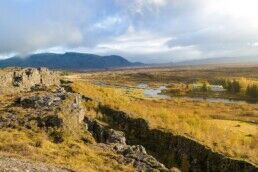
Okay, so Þingvellir isn’t just a history buff’s dream. It’s also a geology geek’s paradise. Get this: Iceland is split right down the middle by the Mid-Atlantic Rift. Parts of it, like the Westfjords and Reykjavík, are chilling on the North American tectonic plate. Others, like the Vatnajökull glacier and the East Fjords, are hanging out on the Eurasian plate. Iceland’s the only place on Earth where you can see this rift above water, and Þingvellir? It’s the best seat in the house.
When you roll into the park from Reykjavík, you’ll drop down a steep cliff into a valley. That cliff? It’s the literal edge of North America. Drive through the park, and you’ll climb up beside another huge wall – that’s Eurasia. The valley sandwiched in between, where Þingvellir sits, is the rift valley itself. Talk about standing between two continents!
So, when you’re at Þingvellir, you can literally walk between continents. One of the coolest trails takes you between the edge of the North-American plate and a part of the wall that collapsed, forming the Almannagjá gorge. This walk is a real eye-opener to the geological action happening here, and it even ends with a sweet waterfall called Öxaráfoss.
Here’s a fun fact: the tectonic plates in Þingvellir are drifting apart at about 2.5 centimeters a year, and they’ve been at it for ages. You can really see the impact of this movement all over the park. There are lava fields that bubbled up as the continents split, and the place is dotted with ravines that got torn open by earthquakes over the centuries.
Earthquakes are still a daily thing in Þingvellir, but most are so small you don’t even feel them. And while no volcano has erupted in the area for 2000 years, they’re not considered dead. More eruptions could happen – it’s just a matter of when.
Present-day Þingvelli

So, between 2015 and 2016, a whopping 700,000 people swung by Þingvellir National Park. It’s only a 45-minute drive from Reykjavík and the first pit stop on the Golden Circle, so it’s no surprise it’s a hot spot. With tourism on the rise, those numbers are only gonna go up.
These days, people flock to Þingvellir for more than just the epic history and mind-blowing geology (though those are still big draws). A lot of folks are also coming for the unique snorkeling and diving experiences.
The ravines, ripped open by the tectonic shifts, get filled with meltwater from Langjökull glacier. This water’s been traveling underground for decades, getting filtered through porous lava rock. By the time it hits the ravines, it’s super clean and clear as glass.
The star of Þingvellir’s underwater scene is Silfra, the only ravine where snorkeling and diving are allowed. The water’s so clear, you can see over a hundred meters ahead, bathing in this surreal blue light and checking out the crazy geology down below. But heads up, it’s chilly – like, 2 degrees Celsius all year round. You’ll need a drysuit, though some bold snorkelers go in wetsuits.
Silfra’s pretty special, often ranking in the top five dive spots worldwide. Wanna scuba dive there? You’ll need a drysuit certification or a log of at least ten drysuit dives, checked by a pro guide. Snorkeling’s easier to get into, but you’ve gotta be at least 12 and know how to swim.
Þingvellir’s also a big hit with fans of HBO’s Game of Thrones. Spoiler alert for what’s next!
Remember the Almannagjá gorge? In the show, it’s the Gates of the Moon leading to the Eyrie, Lady Lysa’s crib. Caitlyn Stark and her crew, including Tyrion, pop by in Season One. Then in Season Four, the Hound and Arya Stark swing through. On the show, they jazz it up with buildings and crossbowmen, but if you’re a serious Thrones fan, you’ll spot it in a heartbeat.
The area’s also where the Hound and Brienne of Tarth throw down, and the Hound gets left for dead. Plus, Þingvellirvatn, the massive lake nearby, doubles as the bay Arya sails from to Braavos. The crew just edited out the mountains across the lake to make it look like it leads to the ocean.
Þingvellir’s wildlife is another big draw.
Anglers get a kick out of fishing in the lake for its huge trout – a result of 10,000 years chilling in evolutionary isolation. But remember, it’s tightly regulated and not cheap. Birdwatchers love the place too, especially in summer. It’s a hotspot for ducks, golden plovers, and common snipes. And if you’re lucky, you might spot an Arctic Fox or a Mink lurking around.
Visiting Þingvellir is awesome, but the surge in tourism’s been tough on the park. The infrastructure’s been struggling to keep up. There’s this super fragile moss all over the lava rock, and folks straying off the paths have wrecked a lot of it. It’ll take ages to bounce back.
People tossing coins into a ‘wishing well’ has jacked up the metal levels in the lake. And campers? Some are leaving more than just footprints. It’s a reminder that our visits can have a big impact on these amazing places.
Þingvellir is finally catching up with the tourist boom. They’ve got these easy-to-follow paths, and rangers are out making sure everyone’s sticking to the trail. The rules for snorkeling and diving? Getting stricter, which is good for both the environment and safety. Plus, tossing coins in the water is a big no-no now.
Þingvellir’s also leading the pack in reforestation, planting tons of native birches and some imported pines.
As a visitor, just keeping to the rules helps a ton. It’s all about making as little impact as possible. The goal? To keep Þingvellir not just beautiful, but inspiring too – something you’ll want to take back home.
Despite the tourist traffic, Þingvellir’s still got its magic – with its deep history, culture, wild geology, and natural beauty. We’ve just got to do our part to maintain its vibe.

Robert Robertsson
Hey, I'm the founder of Airmango. My love affair with travel and entrepreneurship kicked off in 1994 in Iceland. Fast forward through two decades, and I've been lucky enough to weave my career through five different countries. Each place has left its mark on me, not just in my personal life, but in how I approach business too. With Airmango, I'm bringing all those global insights and experiences to the table – it's like seeing the world through a business lens.
